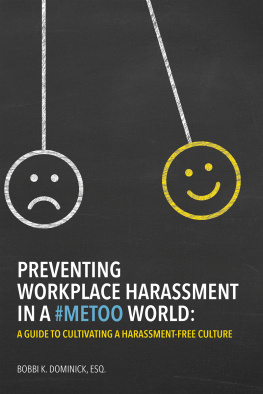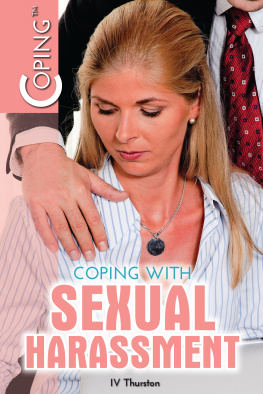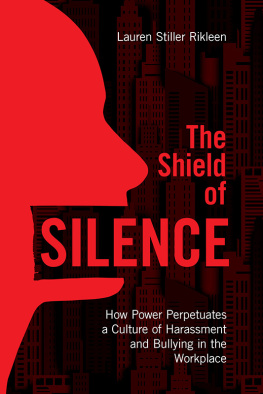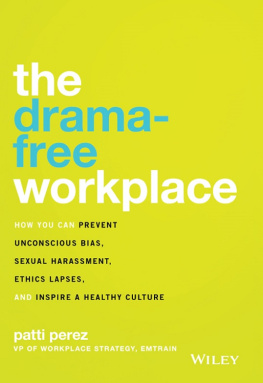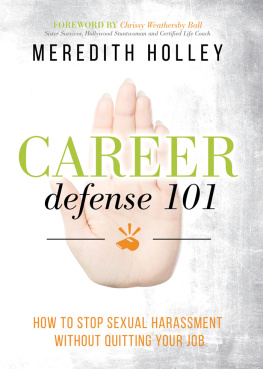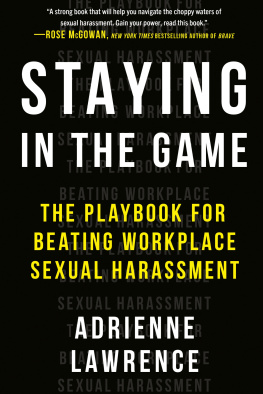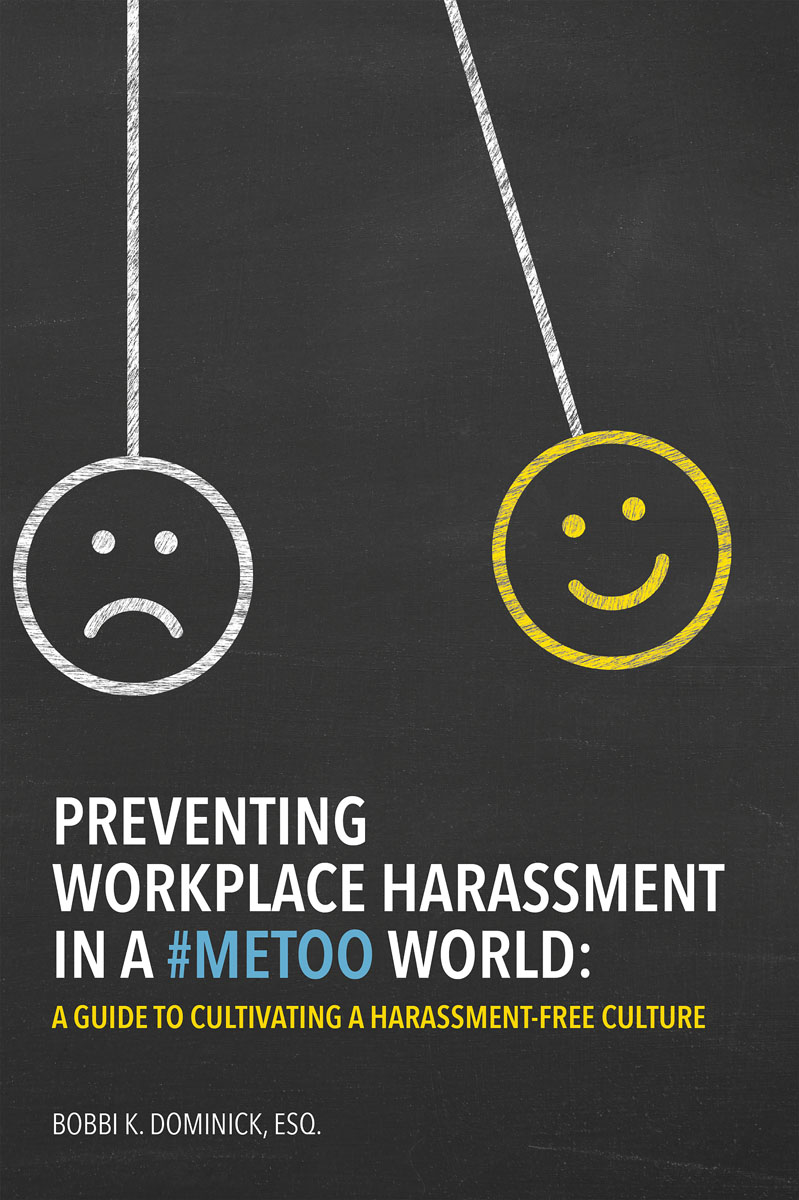

Copyright 2018. Bobbi Dominick All rights reserved.
This publication is designed to provide accurate and authoritative information regarding the subject matter covered. It is sold with the understanding that neither the publisher nor the author is engaged in rendering legal or other professional service. If legal advice or other expert assistance is required, the services of a competent, licensed professional should be sought. The federal and state laws discussed in this book are subject to frequent revision and interpretation by amendments or judicial revisions that may significantly affect employer or employee rights and obligations. Readers are encouraged to seek legal counsel regarding specific policies and practices in their organizations.
This book is published by the Society for Human Resource Management (SHRM). The interpretations, conclusions, and recommendations in this book are those of the author and do not necessarily represent those of the publisher.
This publication may not be reproduced, stored in a retrieval system, or transmitted in whole or in part, in any form or by any means, electronic, mechanical, photocopying, recording, or otherwise, without the prior written permission of the publisher, or authorization through payment of the appropriate per-copy fee to the Copyright Clearance Center Inc., 222 Rosewood Drive, Danvers, MA 01923, 978-750-8600, fax 978-646-8600, or on the web at www.copyright.com. Requests to the publisher for permission should be addressed to SHRM Book Permissions, 1800 Duke Street, Alexandria, VA 22314, or online at http://www.shrm.org/about-shrm/pages/copyright--permissions.aspx. SHRM books and products are available on most online bookstores and through the SHRMStore at www.shrmstore.org.
The Society for Human Resource Management is the worlds largest HR professional society, representing 285,000 members in more than 165 countries. For nearly seven decades, the society has been the leading provider of resources serving the needs of HR professionals and advancing the practice of human resource management. SHRM has more than 575 affiliated chapters within the United States and subsidiary offices in China, India, and United Arab Emirates. Please visit us at www.shrm.org.
Library of Congress Cataloging-in-Publication Data has been applied for and is on file with the Library of Congress.
ISBN (pbk): 978-1-586-44553-9; ISBN (pdf): 978-1-586-44554-6;
ISBN (epub): 978-1-586-44555-3; ISBN (mobi): 978-1-586-44556-0
Printed in the United States of America
FIRST EDITION
PB Printing
SKU: 61.13005
10 9 8 7 6 5 4 3 2 1
Table of Contents
Chapter 1
Why Do We Need a Better Approach?
Chapter 2
The Business Case for Prevention
Chapter 3
The Effect of Workplace Culture
Chapter 4
The Importance of Leadership
Chapter 5
Does Your Training Miss the Mark?
Chapter 6
How Policies Help Shape Workplace Culture
Chapter 7
An Effective Response to Complaints Can Shape a No-Tolerance Culture
Chapter 8
Effective Harassment-Prevention Efforts Include Protection Against Retaliation
Chapter 9
Prompt Corrective Action Is Key to a Proactive, Effective Harassment-Prevention Effort
Chapter 10
Paying Attention to the Aftermath
Appendix
Recommendations from the EEOC Study
Introduction
T he prevention of workplace harassment has been a focus of many organizations for decades, yet incidents of harassment persist. As of this writing, the topic of sexual harassment has taken center stage, with many speaking out about it and famous and powerful people being accused of (and often terminated for) engaging in sexual misconduct. The #MeToo social media movement involves many women speaking out about their experiences with not only workplace sexual harassment but also rape and sexual abuse.
It is becoming painfully obvious that some organizations have allowed a culture of harassment to existand even thrive and prosperwithin their walls. Yet for every high-profile harasser who is exposed, there are likely multiple lower-level individuals who commit acts that havent been publicized by those who are victimized or by the employers who discover the behavior. What are employers doing, or not doing, that allows a culture permissive of harassment to persist? What have employers done, or not done, that has discouraged victims from reporting the abuse? I have worked with many ethical and well-meaning employers over the years who are concerned about preventing harassment and do not want to see it occur in their workplaces. Given that, I believe that the continued existence of harassment in our workplaces is not an intentional disregard in most cases, although there are blatant exceptions. Instead, we have often focused on the wrong things and taken the wrong actions, and our efforts have fallen short.
In June 2016, the cochairs of the US Equal Employment Opportunity Commission (EEOC) Select Task Force on the Study of Harassment in the Workplace called upon employers to reboot harassment prevention efforts.
For those interested in reducing or eliminating harassment in the workplace, this was a hopeful sign. Those hopes dimmed over the weeks following the report, however. A month later, sexual harassment was once again placed in the public spotlight not by the EEOC report, but instead by a rich and powerful CEO who was accused of sexual harassment, Indeed, many imply that if a woman is strong, she will stand up and fight against harassment, when experience tells us that it is simply not that easy. Instead of proactively urging employers to take action to eliminate harassment, women who cant take the heat are urged to get out of the kitchen. Attitudes like this one, and many others, do substantial damage to the harassment-prevention effort, and make harassment nearly impossible to completely eliminate. These attitudes are not created entirely within individual workplaces; employees carry them into the workplace from their personal experiences and the culture in which they live. The aforementioned presidential candidate was elected to lead our country, further reinforcing the message that complaints about harassment are neither welcome nor encouraged here. Anyone sitting at a desk or working at a machine in an American company in late 2016 might have taken those events as a sign that they should be quiet and keep working or get out.
Hope springs eternal. The hopes and dreams of all who long for a harassment-free workplace started to rise again in 2017, as a movement began within powerful organizations and involving public figures to identify and remove those who abuse their power by engaging in harassment. Among public figures, politicians, and media moguls, those who harass were suddenly not powerful enough to survive accusations. The #MeToo movement enlisted powerful allies, and strong women began to stand up and say #TimesUp on sexual harassment. Is this the tipping point, where even lower-level executives and midlevel managers who engage in harassment will be held accountable? Is this the point where all those who suffer from harassment in the workplace (sexual or other forms) will finally see that they can come forward and make it stop? Is this the point where all organizations will start paying more attention to their prevention efforts and engaging in serious efforts to look at their leadership, culture, and organizational profile around prevention?
All of these events highlighted the intrinsic difficulty of eradicating harassment from the workplace. We speak of an environment that is harassment-free, but it may look like (and actually be) an impossible goal. It was disheartening to learn that organizations still existed in 2017 that seemed to promote and support a leader who engages in disrespectfuland even predatory and violent or criminalsexual behavior.
Next page
